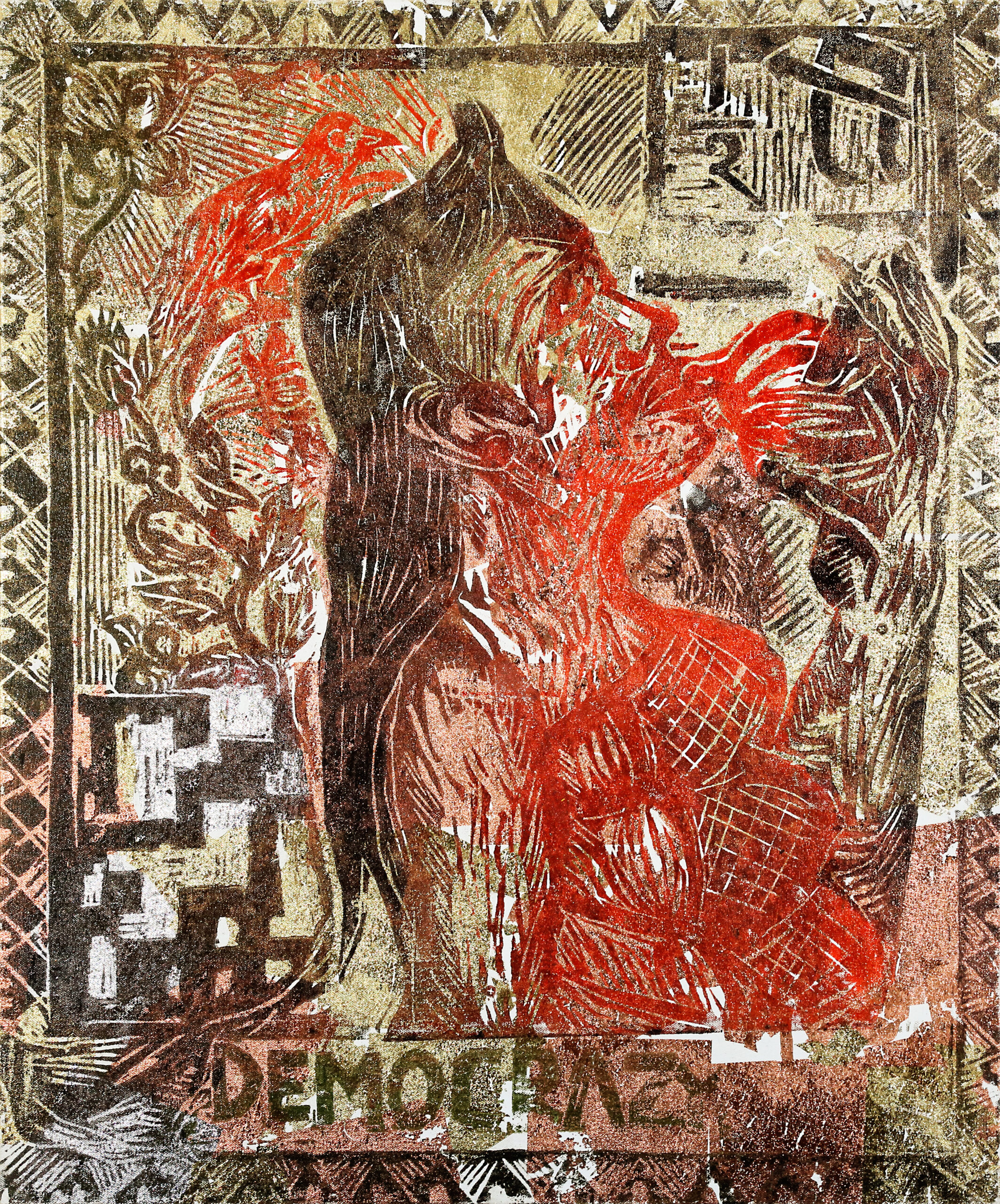Pratul Dash: An Artist-Conservationist Striving to Save the future – Ria Sarkar
Hailing from the picturesque town of Burla in Western Odisha, Pratul Dash came to Delhi two decades ago and was caught up in the chaos of urban spaces and a fast-paced city life. Today the dust has settled on his cultural shock and he is an acclaimed multidisciplinary artist, who has worked across diverse media including painting, video art, performance art, photographic art, installation and sculpture. He has received the prestigious Inlaks award and attended many residencies, including one at Cittadelarte in Biella, Italy. His environmentallyconscious works on current issues pertaining to migration and displacement have been widely acknowledged and showcased in several solo and numerous group shows across the globe. 
Having stayed true to his small-town roots, Dash has a genial countenance much loved by his friends and family. With every passing year he becomes increasingly proficient in creating minutely detailed works that resonate with miniaturist techniques. His narrative questions the state of our environment and engages the viewer into examining some hard-hitting truths about the world’s dwindling flora and fauna. A deeply intuitive artist, Dash’s mediums are interchangeable, acting as vessels that carry his vision to the viewers while exploring the irreversible impact of urbanization in cities. His visual vocabulary has been laboriously developed over time to address the ‘human vs. nature’ conflict.
about his roots and what contributed to his artistic journey from being an out-of-towner to an artistconservationist. 
Growing up in nature’s lap with a culturallyconscious father.
A quaint little town on the banks of the Mahanadi river, Burla started out as a settlement that came into existence due to the construction of the Hirakud Dam, which is the world’s longest manmade earthen dam. At the time, an Industrial revolution had begun in post-independence India which led this small area to become an educational hub of sorts with a medical college, university and even an engineering college being set up in the early 1950-60’s. Interestingly, Dash feels that due to these developments Burla took on a cosmopolitan character which even the capital city of Bhuvneshwar cannot claim to have.
Apart from Burla’s beautiful surroundings, the artist was heavily inspired by his father’s involvement in the arts. Working as a translator and educationist, his father was immersed in literature, film and the ongoing cultural and socio-political discourses, which allowed Dash to be introduced to these fields at an early age. He reminisces, “Because of my father’s work as a translator, I had access to many international magazines from Russia.” Through them he discovered Tolstoy’s paintings and the Socialist Realism movement in art. His father also kept the famous Amrit Bazaar Patrika which was the only magazine at that time with an art and culture section. “Through the Patrika I was introduced to artists like Ganesh Pyne, Vikas Bhattacharya and illustrator Rathin Mitra’s drawings of Calcutta. This early exposure to the art world formed the basis of my inspirations during childhood,” says Dash. 
Formative years: converting curiosity into a profession
When Dash was fresh out of school, he knew that art was something he thoroughly enjoyed and wanted to explore further. He would be fascinated by the littlest of things – like idol making and wall paintings in people’s houses. But getting a formal education in the arts was not on his mind. He recounts, “It was never a conscious decision for me. I just chanced upon it through my curiosity to learn about how things like idols and paintings were made.”
Harbouring an eager interest in the arts, in 1995 he started his BFA in Painting at B K College of Arts & Crafts in Bhubaneswar. But it was almost at the end of his undergraduate studies that he realised that his inclination towards art was much more than just curiosity. He fondly recounts his moment of realisation, “In my third year of studies at B K College I sent a watercolour painting to Lalit Kala Akademi in Delhi for their final year exhibition. I was pleasantly surprised to hear it got selected, and sold too! No one from my college had ever been selected by the Akademi in the field of painting. That, more than anything, instilled my faith in my own skills as an artist and led me to take up art as a career.”

